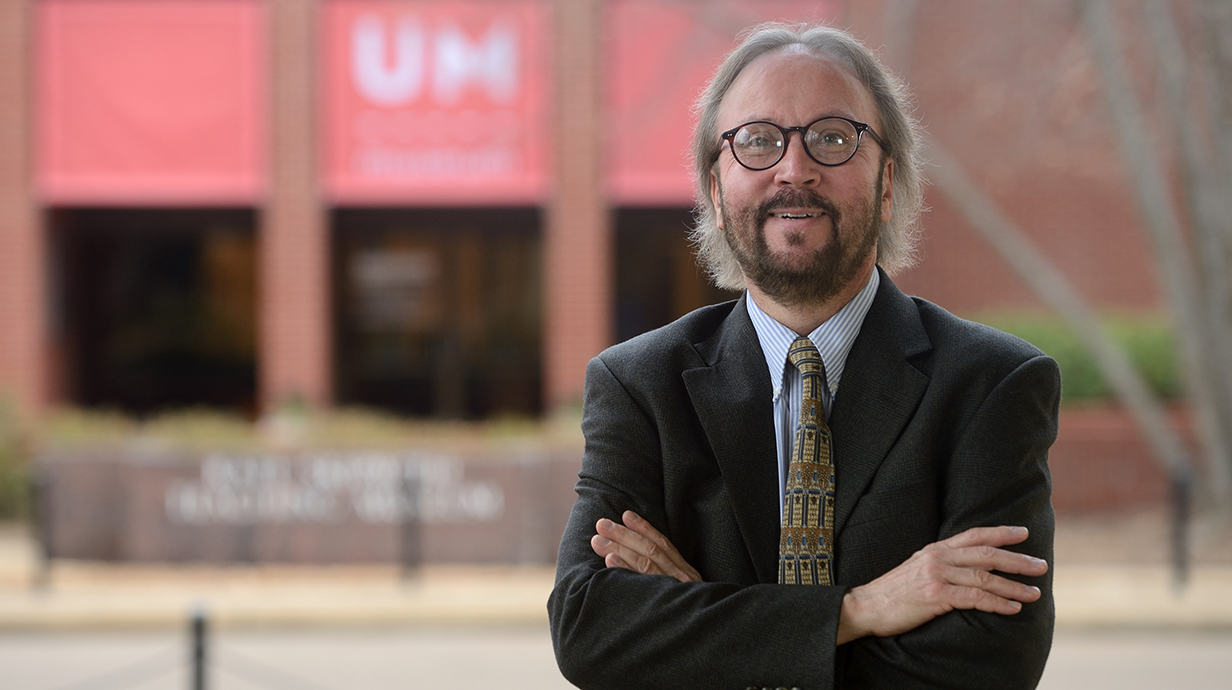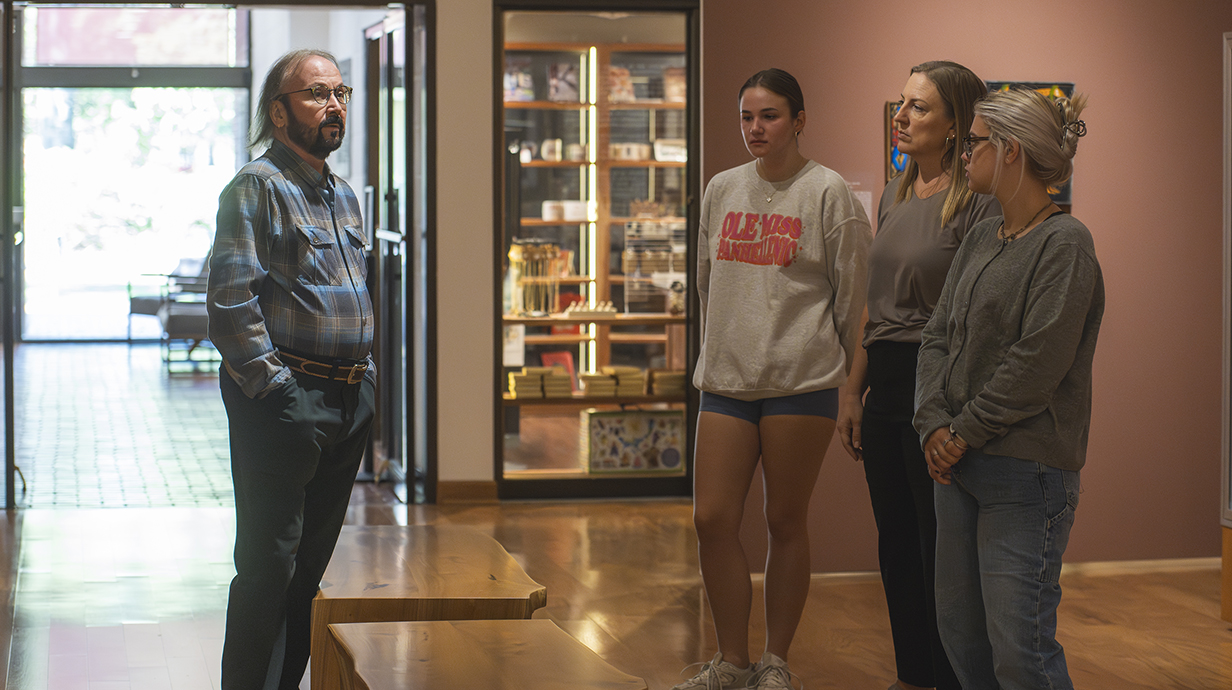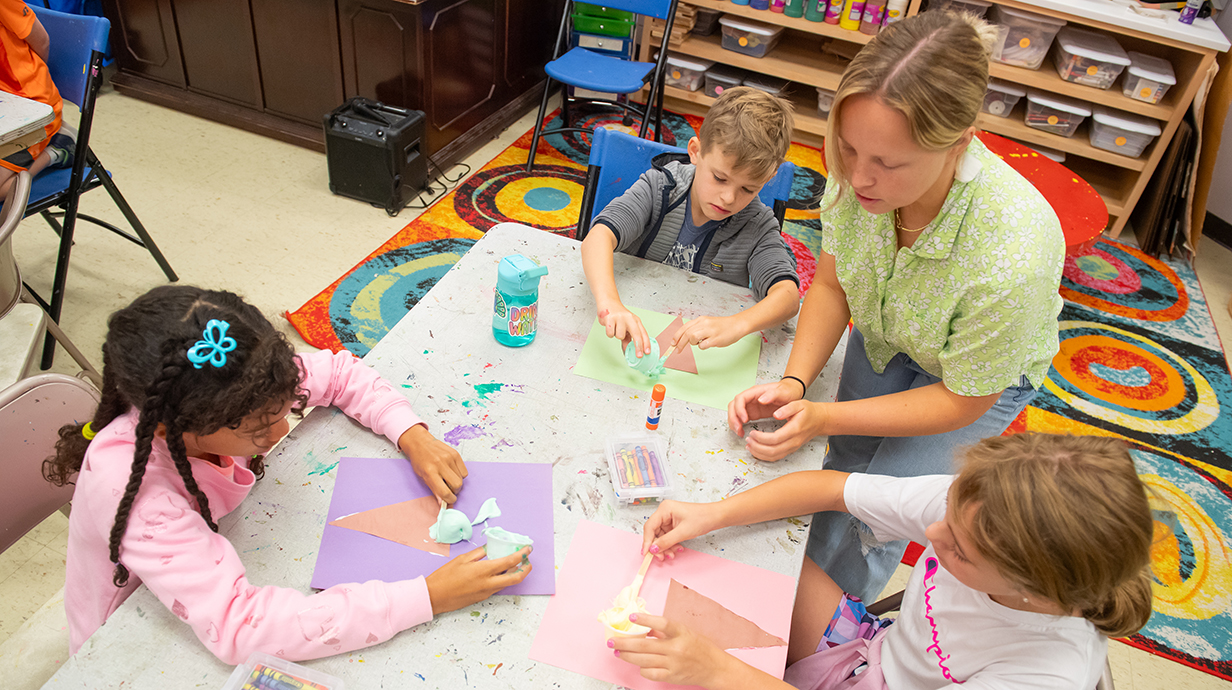Museum Leader Reflects on 13 Years of Service
Saarnio championed access, acquisitions and education during 13 years as director

OXFORD, Miss. – Robert Saarnio, longtime director of the University of Mississippi Museum, is retiring after 13 years of dedicated service to history, art and education at Ole Miss.
When Saarnio joined the university in 2012, he was drawn by the unique opportunity to head both the UM Museum and Rowan Oak, Nobel Prize-winning author William Faulkner's home. He was also intrigued by the extensive collections of art, scientific equipment and antiquities.
But it was the people of the campus and town who made him stay.
"I just fell in love with Oxford," he said. "This community embraced me. The university embraced me. The town embraced me. It's been an honor and a privilege to serve this place."
During his tenure as director, the museum has made multiple notable acquisitions and ranked among both EDsmart and College Rank's top university museums in the country.

Robert Saarnio (left) speaks with a museum studies class at the entrance of the UM Museum's main exhibit hall. Saarnio said the vast collections of antiquities, art and scientific instruments drew him to the museum, but that it was the people of Ole Miss and Oxford who made him stay. Photo by Srijita Chattopadhyay/Ole Miss Digital Imaging Services
"Robert has advanced the stature of our museum and historic homes, which has improved the way that they serve our community and campus," Provost Noel Wilkin said. "His approach to draw people to the museum using its holdings and hosting significant exhibitions made the museum more visible and expanded the community's access to great works of art."
One of the first things Saarnio did, however, was make sure the museum was a place of welcome for its community. In 2013, he implemented a free admission policy, ensuring that all students, faculty, staff and community members could access the museum's art and education programs.
"Museums serve several functions," Saarnio said. "They're gathering places, places of generating visual literacy and creative inspiration. They are places of knowledge, and there should be no barrier to accessing that knowledge.
"That's why we made admission free: to say to our community, 'You are all welcome.'"
The number of resources available for that community has grown under Saarnio's guidance, too. The museum offers programs for people of all ages as well as tours, teacher resources and family activity days.
"What makes academic museums so unique is the dual-facing mission: to serve the university and the broader public equally," he said. "That's different from a municipal museum, and I've found it to be deeply fulfilling."
Saarnio and museum curator Melanie Antonelli also oversaw a broad digitization effort, making the museum's art, antiquities and scientific instruments, and historical artifacts available to all.
"That's another form of access," he said. "Whether it's scholars in Berlin or children in the community, anybody can access our collections.

At a Foodies Club Camp at the UM Museum, campers work with employees from the Oxford Creamery to create art, food sculptures and meals. These camps are one of many ways the museum has included the community its mission to educate under Robert Saarnio’s leadership. Photo by Kevin Bain/Ole Miss Digital Imaging Services
"We still have a long way to go (to digitize the full collection), but I think we've built an incredibly strong and talented staff in the process."
Before joining the Ole Miss staff, Saarnio served as the deputy director of the Honolulu Academy of Arts, associate director of the Doris Duke Foundation in Shangri La and as the director of museums at Johns Hopkins University.
"In all of my career, I've never seen a staff of this size be this productive in serving the community, serving the campus, developing exhibitions and being stewards of this collection," he said. "The team I get to work with is skilled, talented, scary smart and, most of all, fun.
"This museum is 86 years old, and I can say for a fact that this is the strongest team we've had."
None of this work would have been possible without an "ecosystem of support" from the provost's office and the Friends of the Museum, he said.
"It is incredibly rare to have a university that so well supports and understand the need for the kind of work that we do," Saarnio said. "I call it an ecosystem because it's not one person, it's the provost and the chancellor and the Friends of the Museum and deans, and the list goes on and on.
"All of that created an environment that kept me here and kept this museum growing."
Following his retirement on Monday (June 30), Saarnio plans to travel and to continue serving on the board of directors of the Association of Academic Museums and Galleries. Most importantly, he plans to stay in the community that welcomed him.
"Like I said, it's been an honor and a privilege to serve this place, and that's why I'm not leaving Oxford," he said. "I would not leave this wonderful town. I'm so happy to have my home and my life and my friends right here."
Top: Robert Saarnio, longtime director of the UM Museum, retires Monday (June 30). Under Saarnio's direction, the museum has become more accessible to the community and has made its collections available digitally to people around the world. Photo by Kevin Bain/Ole Miss Digital Imaging Services
By
Clara Turnage
Campus
Office, Department or Center
Published
June 27, 2025
